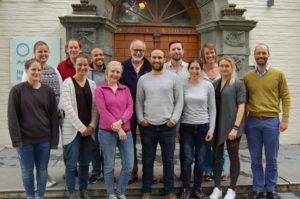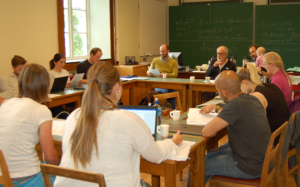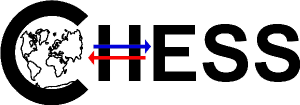
A group photo with Dallas, Thomas and all participants

everyone actively participated in the class
It was my pleasure to conduct the seventh annual Science Writing Workshop during the week of 19-23 July 2017. If the workshop had a subtitle, it would be “Learning to Think Like a Writer.”
Each of twelve students—from a myriad of scientific disciplines— submitted a draft of their research paper before the workshop began. As a group, we considered the abstracts, introductions, and concluding material, asking, “Are they clear?” We then used the papers as springboards to establish basic writing principles that will become part of the students’ writing process. I also stress repeatedly, to unknown result, that the very best way to learn to write is to read.
We addressed the nearly universal problem for new science writers—attaining structure, without which there can be no clarity. I offered techniques and procedures to find structure before they begin writing sentences. Monday through Thursday we discussed three papers per day, using Friday for rewrites.
This year we added a new wrinkle to the workshop. I invited individual faculty members to attend each session and to contribute as they saw fit to the discussions. I much appreciated their willingness to attend, and I’m certain that our students benefitted from the faculty’s contributions. Also, their very presence demonstrated that learning to communicate science as a vital part of science education is taken seriously by the institute. We will repeat this format in years to come.
That students’ avid willingness to help their peers improve the individual papers and their receptivity to new ideas about the writing process made the workshop a pleasure to teach. I was particularly gratified by a student’s comment that this “was the most useful course in her graduate career.”
My thanks to everyone involved, especially to Thomas Spengler, who initially established the workshop seven years ago.
Written by Dallas Murphy
Details of the course program here
